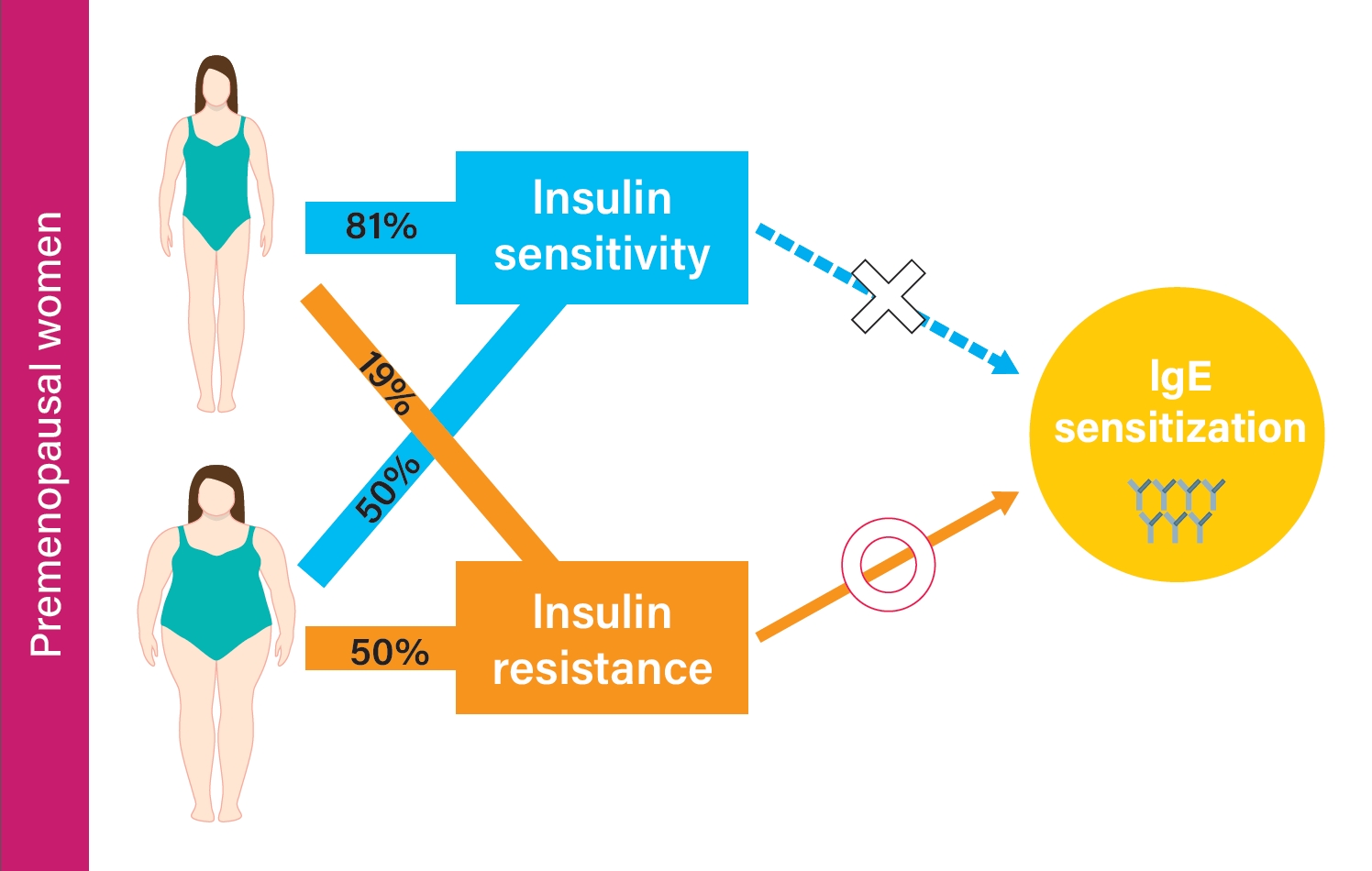
- Current
- Browse
- Collections
-
For contributors
- For Authors
- Instructions to authors
- Article processing charge
- e-submission
- For Reviewers
- Instructions for reviewers
- How to become a reviewer
- Best reviewers
- For Readers
- Readership
- Subscription
- Permission guidelines
- About
- Editorial policy
Search
- Page Path
- HOME > Search
- Metabolic Risk/Epidemiology
- Insulin Resistance Increases Serum Immunoglobulin E Sensitization in Premenopausal Women
- Seung Eun Lee, Ji Yeon Baek, Kyungdo Han, Eun Hee Koh
- Diabetes Metab J. 2021;45(2):175-182. Published online April 14, 2020
- DOI: https://doi.org/10.4093/dmj.2019.0150

- 6,219 View
- 123 Download
- 1 Web of Science
- 1 Crossref
-
 Graphical Abstract
Graphical Abstract
 Abstract
Abstract
 PDF
PDF PubReader
PubReader  ePub
ePub 
Background Although studies have shown that obesity is associated with aeroallergen sensitization (atopy), controversy still exists. We aimed to investigate the association between metabolic status, obesity, and atopy stratified by sex and menopausal status.
Methods A total of 1,700 adults from the 2010 Korean National Health and Nutrition Examination Survey were classified into metabolically healthy nonobese (MHNO), metabolically unhealthy nonobese (MUNO), metabolically healthy obese (MHO), and metabolically unhealthy obese (MUO) by body mass index and insulin resistance. Atopy was defined as a positive response to at least one aeroallergen. Multiple regression analysis was used to evaluate the risk of immunoglobulin E (IgE) elevation or atopy in relation to the degree of metabolic abnormality and obesity.
Results In premenopausal women, total IgE was positively correlated with obesity and insulin resistance. MUNO participants had a higher risk of having elevated total IgE compared to MHNO participants (odds ratio [OR], 2.271; 95% confidence interval [CI], 1.201 to 4.294), while MHO participants did not show a significant difference (OR, 1.435; 95% CI, 0.656 to 3.137) in premenopausal women. MUNO, but not MHO was also associated with atopy (OR, 2.157; 95% CI, 1.284 to 3.625). In men and postmenopausal women, there was no significant difference between metabolic status, obesity, and atopy among groups.
Conclusion Increased insulin resistance is associated with total IgE and atopy in premenopausal women but not in postmenopausal women or men.
-
Citations
Citations to this article as recorded by- Is There a Relationship between Insulin Resistance and Eosinophil, Inflammatory Parameters Neutrophil to lymphocyte ratio, C-Reactive Protein Values?
Meltem YİĞİT, Özgür OLUKMAN
Medical Records.2024; 6(1): 32. CrossRef
- Is There a Relationship between Insulin Resistance and Eosinophil, Inflammatory Parameters Neutrophil to lymphocyte ratio, C-Reactive Protein Values?

 KDA
KDA
 First
First Prev
Prev





